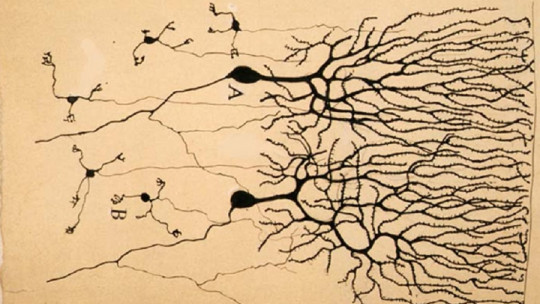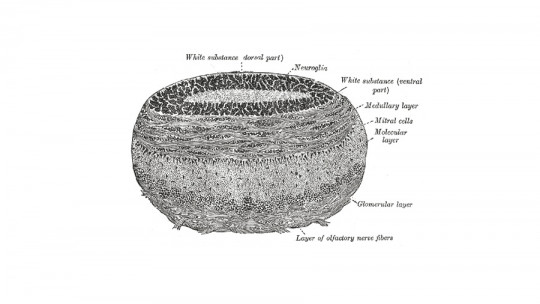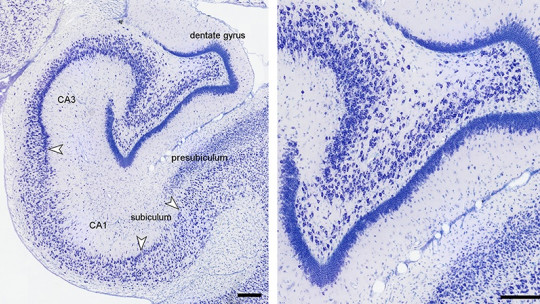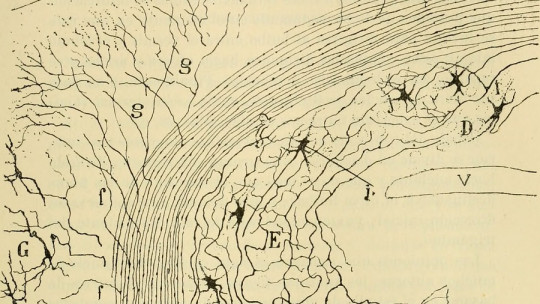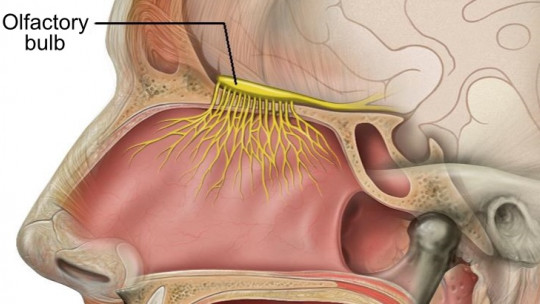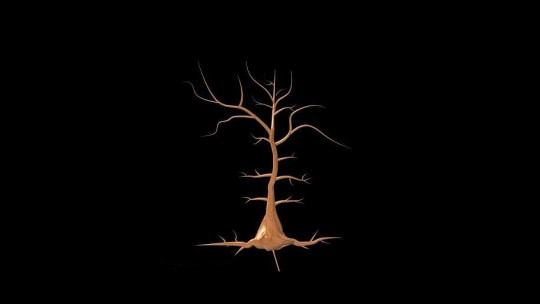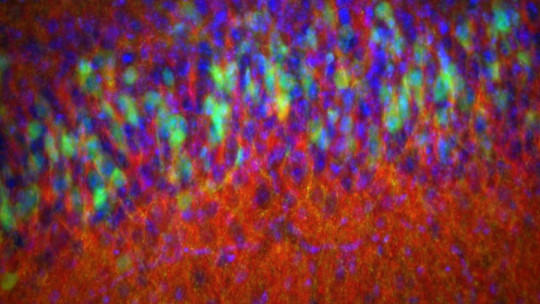Granule cells can be found in various brain structures such as the cerebellum, the olfactory bulb or the dentate gyrus of the hippocampus, among others.
This group of neurons share a single characteristic, and that is their particular smallness. The different functions they carry out vary depending on the brain area in which they are located, and are involved in auditory, olfactory processes, memory or motor learning.
In this article we explain what granule cells are, where they are located, what their structure is, and what type of functions they perform.
Granule cells: definition and anatomical location
The term granule cell is used to define different types of neurons , whose only characteristic in common is that they all have very small cell bodies. We can find granule neurons within the granular layer of the cerebellum, in the dentate gyrus of the hippocampus, in the superficial layer of the dorsal cochlear nucleus, in the olfactory bulb, and in the cerebral cortex.
The vast majority of neurons in the brain are granule cells and Almost half of the cells of the nervous system are part of the cerebellum Cerebellar granule cells receive excitatory inputs (using glutamate as a neurotransmitter) from mossy fibers that originate in the pontine nuclei, located in the ventral pons and related to activity and the learning of motor skills.
In turn, the granule cells of the cerebellum also send parallel fibers upward, through the Purkinje layer, to the molecular layer where they branch and extend by branches to the dendrites of the cells that bear the name of said layer, Purkinje cells, large neurons that function through the neurotransmitter GABA and whose dendrites are capable of releasing endocannabinoids that reduce the potential of synapses, whether excitatory or inhibitory.
On the other hand, the axons of the granule cells of the dentate gyrus of the hippocampus are transformed into mossy fibers that connect exclusively with the foot of the hippocampus. Additionally, studies have observed that hippocampal granule neurons They are one of the few cells capable of regenerating throughout the life cycle, mainly in certain mammals (although it is being studied whether the same happens in humans).
Structure
Granule cells in different regions of the brain They are functionally and anatomically diverse As we mentioned at the beginning of the article, the only thing they have in common is their small size. For example, granule neurons in the olfactory bulb function with the neurotransmitter GABA and do not have axons, while the same cells in the dentate gyrus of the hippocampus have projection axons that function with glutamate.
The granule cell nuclei of the olfactory bulb and dentate gyrus are the only groups of neurons that undergo adult neurogenesis, unlike those of the cerebellum and cortical neurons. On the other hand, all granulosa cells (except the olfactory bulb) They have a typical structure consisting of a neuron with dendrites, a soma or cell body and an axon
The granule cells of the cerebellum have a tightly packed round nucleus with synaptic glomeruli formed by granule neurons, Golgi cells and mossy fibers (one of the main contributions to the cerebellum from the cerebral cortex and other regions). Those located in the dentate gyrus of the hippocampus, for their part, have an elliptical soma and their dendrites project towards the molecular layer.
In the dorsal cochlear nucleus we can find small granule cells with two or three short, claw-shaped dendrites, which act as inhibitory interneurons. These form glomeruli through which the mossy fibers pass, similar to what occurs in the cerebellum.
Regarding the structure of the granule neurons of the olfactory bulb, it should be noted that they lack a main axon (and accessory), and each cell has several short dendrites in its central part and a single long dendrite with a tip at the end. The branches project towards the plexiform outer layer of the olfactory tract.
Features
Granule cells have different functions depending on the structure where they are located.
1. Granule cells in the cerebellum
It has been suggested that the granule cells located in the cerebellar cortex receive a few excitatory inputs that come from the mossy fibers, and whose function would be to encode different combinations of inputs from the latter cells. Another type of fibers, climbing fibers, would be responsible for sending specific signals to Purkinje cells to modify the strength of synaptic connections of parallel fibers.
This last explanation is part of the well-known theory of the cerebellum by neuroscientist David Marr , known among other things for his work on computational theories of the cerebellum, neocortex, and hippocampus. However, these are statements that have not been corroborated, so even more research is necessary in this regard.
2. Granule cells of the dentate gyrus of the hippocampus
As is known, the dentate gyrus of the hippocampus is involved in processes that have to do with the formation and consolidation of episodic memory, navigation and spatial memory. Research suggests that granule cells in this brain area would play an important role in the formation of spatial memories.
Furthermore, it appears that granule cells born in adults would be highly active during the first weeks after functional integration into the neuronal network. What animal studies have been able to verify is that, As granule cells age in adults, their function changes and they go from being specialized in the separation of patterns (formation of different memories of similar episodes by generating different representations of the temporal and spatial relationships of the events), to the rapid completion of those same patterns.
3. Granule cells of the dorsal cochlear nucleus
The cochlear nuclei are the first relay of the primary auditory pathway and receive the axons of the ganglion cells of the auditory nerve, whose function is to decode auditory information (duration, intensity and frequency).
The granule cells in the ventral area of the cochlear nucleus receive projections from the primary auditory cortex and the signals received by these neurons contain information about parameters such as head position, allowing correct auditory orientation to occur. The granule cells of this brain structure would also be involved in the perception and orientation response to environmental sound stimuli.
4. Granule cells of the olfactory bulb
The granule cells of the olfactory bulb receive input from deep areas of the brain involved in the formation of memories and cognition, and are responsible for inhibiting the neurons that receive sensory input. In this way, the granulosa cells They allow the brain to interpret and shape olfactory experiences
In addition, the granule neurons located in the olfactory bulb would also have an essential function in the formation of memories, as well as in the selection and discrimination of the most significant odors, discarding the least important ones so that the brain focuses only on the part most prominent of the olfactory stimulus.

